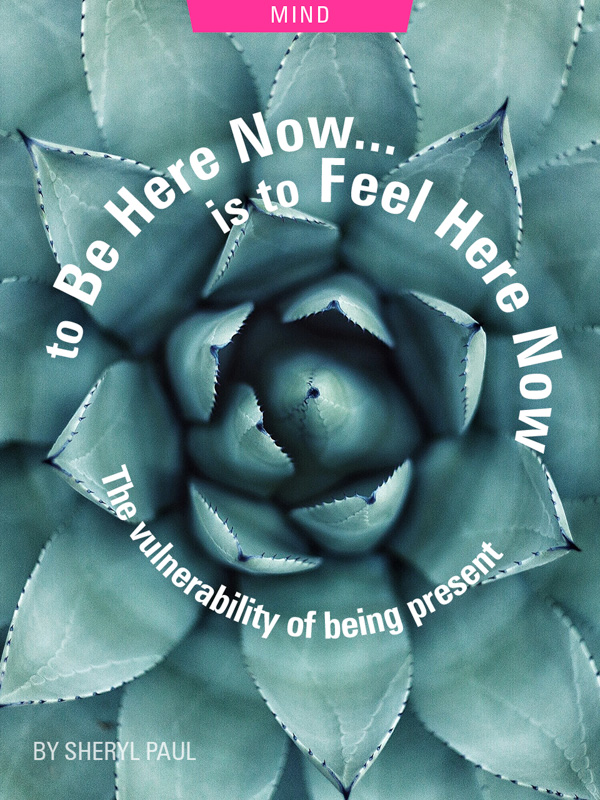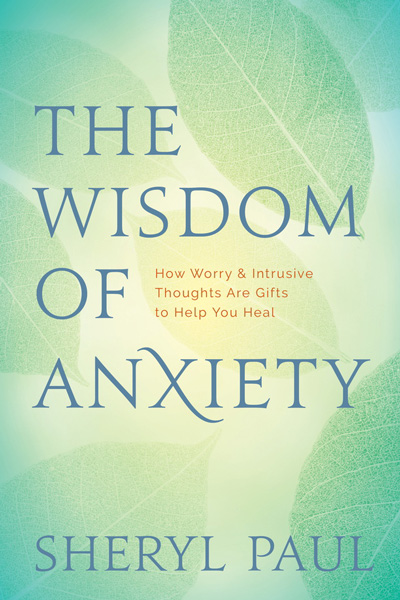
In a world where we are told to bypass vulnerability at all costs, we miss its hidden gifts of healing, understanding and potential
—
Bodhichitta is our heart — our wounded, softened heart. Now, if you look for that soft heart that we guard so carefully — if you decide that you’re going to do a scientific exploration under the microscope and try to find that heart — you won’t find it. You can look, but all you’ll find is some kind of tenderness. There isn’t anything that you can cut out and put under the microscope. There isn’t anything that you can dissect or grasp. The more you look, the more you find just a feeling of tenderness tinged with some kind of sadness. This sadness is not about somebody mistreating us. This is inherent sadness, unconditioned sadness. It has part of our birthright, a family heirloom. It’s been called the genuine heart of sadness.
~ PEMA CHÖDRÖN, Start Where You Are
We are not taught to meet life on life’s terms, that is, living in the present moment.
Left to ourselves, our ego will shift and move and invent and convince in order to protect us from meeting life square in the eye. All the ego’s intrusive thoughts and fear-based schemes are, in fact, finely crafted and often convincing escape hatches designed to remove us from touching the raw places that define being human — our loneliness, pain, fear, uncertainty, and transcendence — the places that only arise when we drop down into this moment.
One of anxiety’s most brilliant defense tactics to protect us from the vulnerability of being present — is to lure us into the mind trap of perseverating on the past in the form of regret, guilt, or shame. That or of launching us off in the rocket ship of the future where we worry about things that are out of our hands.
One of the keys to healing from anxiety is to learn to come into this moment, where our vulnerability lives. This isn’t easy, especially since very few people were taught how to tend to vulnerability. In fact, we’re taught just the opposite, and often receive the message to never make ourselves vulnerable because it’s not safe. This mindset likely made sense for most of our history as humans when it truly wasn’t safe to be vulnerable.
But as we’re at a threshold of consciousness with anxiety as the guide, we’re being invited to learn a new way. Curiosity and compassion are the allies.
Being willing to open to the full, raw, tender experience of being human is the light in the darkness.
There is no escape hatch from life.
Alongside our past- or future-based worry, we abide by the myth of I’ll be happy when… as an escape hatch. We fall prey to the insidious cultural message that tells us we’ll be happy when we graduate from college, land the job, get married, buy the house, get the dog, have the baby (fill in your own story), or you’ll be happy when this test is over, this job assignment is complete, the sun comes out. But when each of those milestones or events occurs, and you still feel restless and uncertain — you wonder what is wrong. There’s nothing wrong. It’s just that there’s no escape from life: We can’t avoid the inherent loneliness, pain, uncertainty, and transcendence of being human. Let’s explore some of these states a bit further.
Life can be a lonely journey. In fact, loneliness is part of the human experience, for it’s an undeniable fact that nobody, no matter how close they may come to our hearts, is living inside of our bodies and seeing life through our lens. One of the hidden diamonds embedded inside the questions that often plague the anxious mind is the invitation to embrace our fundamental, existential loneliness. When we’re hooked on the questions, we’re fixated on the ego’s convincing escape hatch that says, You wouldn’t feel lonely with someone else or somewhere else.
When we recognize, on the other hand, that loneliness is part of the human condition, we can learn to meet our solitude — and perhaps even become friends with it. When we meet the solitude instead of running from it, it changes, paradoxically, into friendship — but it’s our own internal friendship instead of that of expecting another to fill that place of longing.
Life can be a painful journey.
For some, especially those with a wide-open heart, pain is a part of daily life. We don’t even have to know why we’re crying, but when we slow down and soften, we find that a layer of sadness sits in the middle of an open heart. We try to escape this ‘genuine heart of sadness’, as Pema Chödrön describes it, but there’s no escape — because life includes pain. If you’re someone whose heart hasn’t been hardened over, you will be highly attuned to this pain on a daily, and sometimes hourly, basis.
There’s no getting over life; we must learn to go through it.
Life can be a transcendent journey.
Moments, minutes perhaps, when the physical body breathes a full breath, expanding beyond the familiar boundaries, the soul does as well. Transcendence is when the soul recognizes itself, when the infinite part of me remembers itself by seeing itself reflected somewhere in this finite world.The quest for transcendent experiences is not a way to bypass the inherently uncomfortable fact of being a human in a physical body. But we can seek transcendence as we seek oxygen, for these moments in time when we are simultaneously lifted out of ourselves and are remembering ourselves, oxygenate our souls and make life worth living.
Where do we find transcendence? There is no formula.
We find it by following the faint whispers of yes until the quiet song awakens into full chorus, until the transcendent moments aren’t isolated experiences, but mark our daily and even hourly life.
This may happen when you’re hiking in the hills, sitting in prayer, looking at art, writing a poem or memorizing one, working with a dream, climbing a mountain, sitting on the beach, or petting a cat.
We leap from lily pad to lily pad of yes until they string together to create one green path that guides our days and nights. We must make space and call on the ally of slowing down into stillness to invite the yes. We must carve out a quiet spot in some corner of our busy lives to hear the insects singing. And we must know that transcendence is not the goal and is not, in fact, separate from the pain and loneliness, the fear and vulnerability that define being human.
Transcendence is meeting life on life’s terms, putting down the armor, stopping the fight, and simply saying,
Here I am. I allow life to flow through me and with me. I say yes to life in all of its varied expressions of pain and beauty. Here I am.
You may also enjoy reading The Importance of Intention to Create Freedom and Aliveness by Carter Miles
